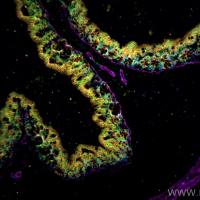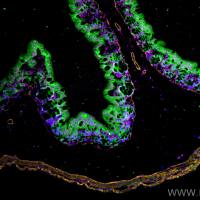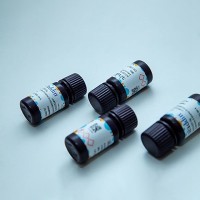Random Primed Labeling
互联网
1106
Labeling of DNA by nick translation has three major drawbacks: the time taken to perform the reaction (at least 1 h), the temperature sensitivity of the reaction, and the low specific activity of the probes generated. Random primed labeling developed by Feinberg and Vogelstein (1 ,2 ) solves all of these problems. The technique uses short random sequence hexanucleotides (in the original method) which prime the denatured target DNA at numerous sites. The Klenow fragment of DNA polymerase I is then used to synthesize new strands of DNA from these primed sites. The addition of a radioactive nucleotide results in a labeled probe suitable for use in Southern hybridizations, etc. Small amounts of starting material are required and the 10-min reaction results in probes labeled to a high specific activity.









